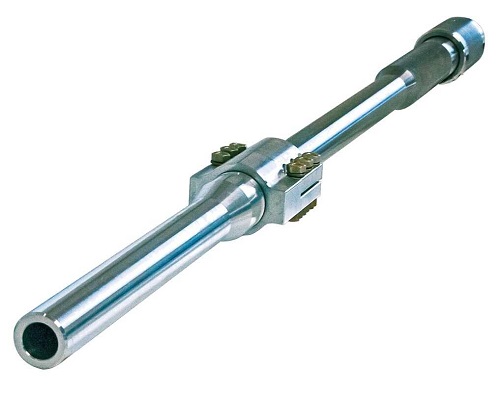U.S Department of Homeland Security (S&T)2020-03-12 15:08:00
New Water Cannon Technology a Breakthrough for Bomb Squads
Improvised explosive devices (IEDs) are a constant and ever-changing threat to the security of our nation. Their extreme destructive potential demands innovative solutions. That’s where the Reverse Velocity Jet Tamper (ReVJeT) comes in.
The Department of Homeland Security (DHS) Science and Technology Directorate (S&T), in partnership with the Federal Bureau of Investigation (FBI), has fully transitioned this versatile tool to each and every one of the hundreds of state and local bomb squads across the country through the FBI’s Hazardous Device School. In the span of about two years, the concept was discovered, specifications were developed, prototypes were built and field-tested, and the final product was delivered directly into the hands of first responders.
“It was one of those eureka moments,” said FBI Supervisory Special Agent Dr. Ian Vabnick, who accidentally discovered the technology behind ReVJeT while testing something else. “This is probably the biggest advancement in water cannon technology in the last 50 years. There have been other improvements, but when it comes to firing fluid jets, ReVJeT is the most significant advancement in stabilizing that jet.”
ReVJeT breaks apart IEDs by targeting a stream of high-velocity liquid, such as water. It does not detonate the device, but rather disarms it from a distance and allows bomb technicians do their jobs faster, safer, and more effectively. ReVJeT improves upon existing platforms by a conservative 300% and can enhance any propellant-driven disrupter system, making it capable of neutralizing various IEDs.
The genius behind the technology is that it enhances efficiency by combating a phenomenon in hydrodynamics known as the reverse velocity gradient. Within a water cannon, there are millions of individual molecules of water. As the cannon fires, and a jet of water streams out, the molecules of water move at different speeds. The water in the front does not have as much velocity as the water in back, so its momentum is lower.
Another way to think about it is to picture a train with the caboose moving faster than the engine. If the conductor hits the brakes, but the back is still moving fast, then the train cars in the middle will all get knocked off the track. That is what happens to a jet of water as it comes out of a cannon. The back end is moving faster than the front and overtakes it. The water in the middle gets pushed out of the way. As a result, the jet breaks itself apart as it travels toward the target, the IED.
“There is an exponential drop-off in performance with distance as you move a disruptor away from a bomb, but not with ReVJeT,” said Vabnick. “There isn’t an exponential drop off because you’ve gotten rid of one of the biggest inefficiencies in the system, which is this reverse velocity gradient phenomenon.”
The ReVJeT effort is part of DHS S&T’s Response and Defeat Operations Support (REDOPS) program, which provides a collaborative structure for addressing IED response and defeat capability gaps identified by federal, state, and local bomb technicians, including the National Bomb Squad Commander’s Advisory Board. Throughout the testing and development process, ReVJeT benefitted from direct end-user involvement. The technology was given to real first responders, so they could evaluate and train with it. ReVJeT is now part of the formal training curriculum at the only school that teaches bomb technicians in the United States.
Rather than going through a vendor, the federal government acquires the tools at-cost, making them in-house and giving them away to the emergency response agencies that need them. Every bomb squad in the country now has this capability and the feedback has been resoundingly positive. One agency even found another application for the technology when forced to problem solve in the field – using ReVJeT to safely open a barricaded door.
This technology transition success story highlights the incredible partnership that exists between DHS S&T and the FBI. In addition to funding support, there is deep collaboration and teamwork that results in game-changing innovations like ReVJeT. Every bomb squad technician has access to this tool, and the necessary training to operate it, and every American is safer because of it.
For more information contact:
Science And Technology
Washington DC
20528
United States Of America
Tel: +1 202-282-8000
